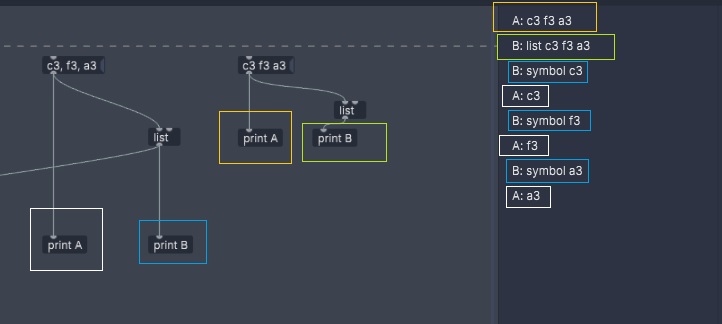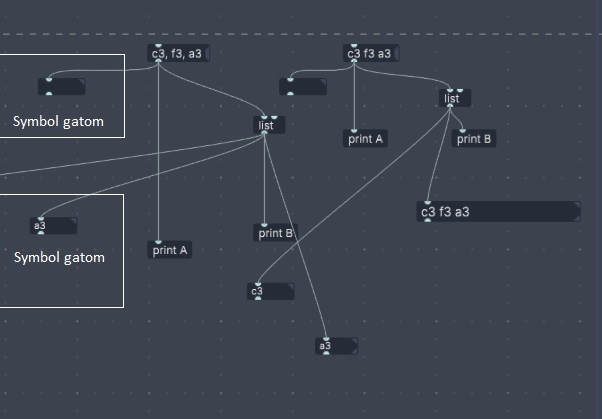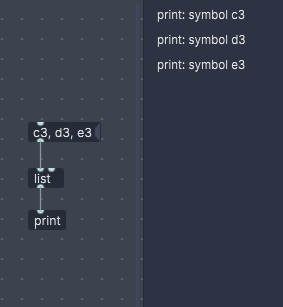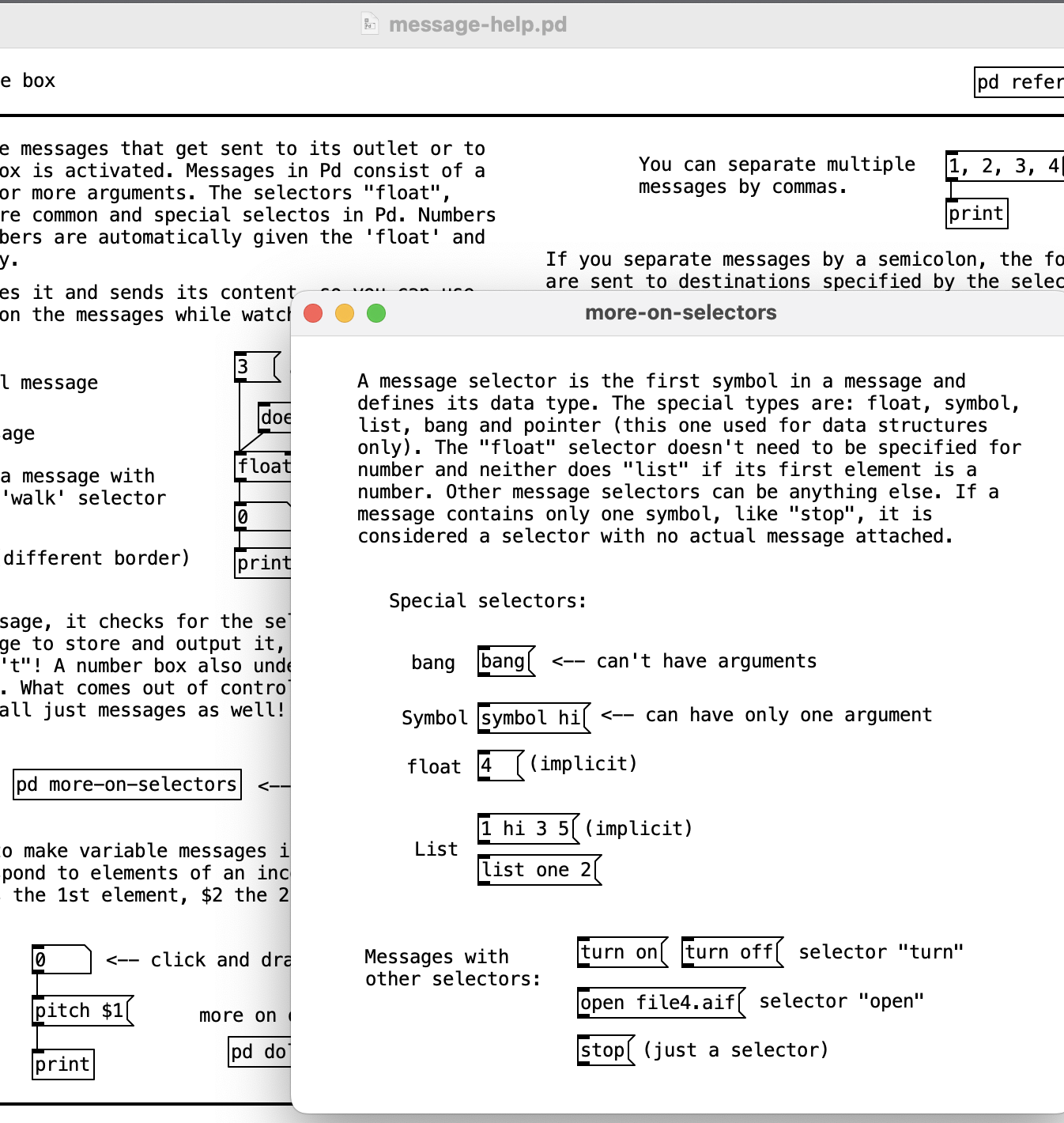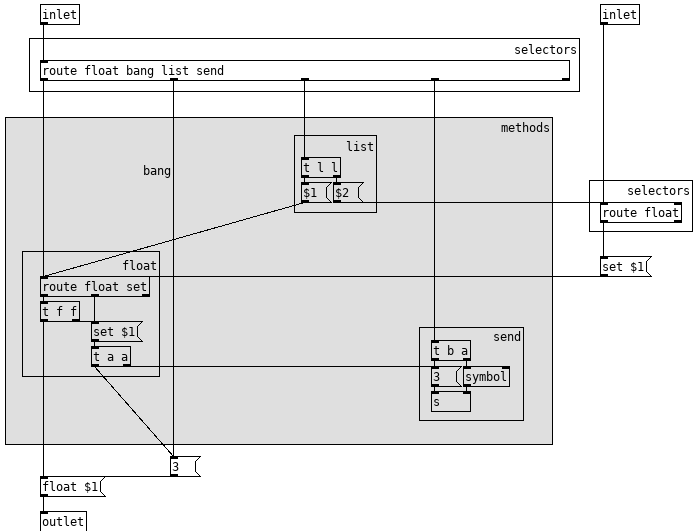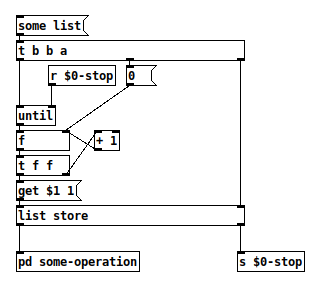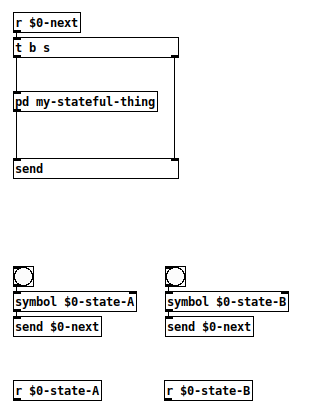@gentleclockdivider said:
The message c3 f3 a3 , the first selector is c3 and thus this message is an implicit symbol , correct ?
nope, there are no implicit symbols in Pd. Symbols are defines with the "symbol" selector, and can take only one argument, quote from the manual "The symbol selector can only have one symbol argument"
It's not a list because the list gatom does not understand it ., neither does the symbol gatom , so is it an unindentified message ?
nope, it is a defined message, with a defined selector
@oid said:
We have three selectors; float, symbol and list
No. that's wrong, we have "infinite" selectors. The selector is a symbol that defines the data type (as the manual says). So, any symbol that comes first in a message is the selector. There some special selectors alright, but they are not just three, but five! Another quote from the manual: These special types are: "float", "symbol", "list", "bang" and "pointer"
if it lacks one of those selectors it treats it as a method like 'set' so your [list store]
The "set" IS the selector. What you refer as a "method" is if the object understands that message selector. So it means it has a function (or "method") to deal with it. If it does not, it will say "no method for set", but it can also say "no method for symbol/float/bang", so it's the same for the special selectors as is with any other general selector. (I see you asked me to chime in later about this, well, here it is).
@gentleclockdivider said:
But the manual clearly states that the first atom in a message
is the selector , and for mesage c3 d3 e3 , the first atom is c3 .
Isn't c3 a symbol , it starts with the letter C ?
Yes, it is a symbol, hence, it is the selector of the message, so "c3 d3 e3" is a message whose selector is "c3" and the actual message is "d3 e3".
When the message is separated by commas , and send though a list ,
the console clearly shows these are seperate symbols , why then ?
they are separated because you're using commas, and commas separate the atoms. And if you sent it to print, you wouldn't see the symbol selector. But since you're passing them through [list] they are gaining a list selector. But since lists need to have two or more elements, one-length lists are converted to a symbol or float message (I think we discussed this on this thread already, and the help file of [list] discusses that).
Now, to be honest, I don't understand why you brought this up here, and why do you ask. I don't see the relation. Just let it be clear that you have 3 messages with just a symbol, and that these are selectors! What is the message then? No message, just selectors. The manual exemplifies something like this when it says about the "stop" message, let me quote it: "If a message contains only one symbol, like "stop", it is considered a selector with no actual message (i.e., no arguments) attached."
I guess the manual could have more examples of generic selectors maybe? I don't know what is exactly not clear in the manual, please let me know so I can see if I can improve it.
@oid said:
I think that excerpt from the manual kind of gets overly technical
Why do you say that?  it's telling it as it is...
it's telling it as it is...
 and I will finally stop doing that when PlugData 1.0 is out, which might happen this year
and I will finally stop doing that when PlugData 1.0 is out, which might happen this year  and then I'll just have to live with some screw ups.
and then I'll just have to live with some screw ups.



